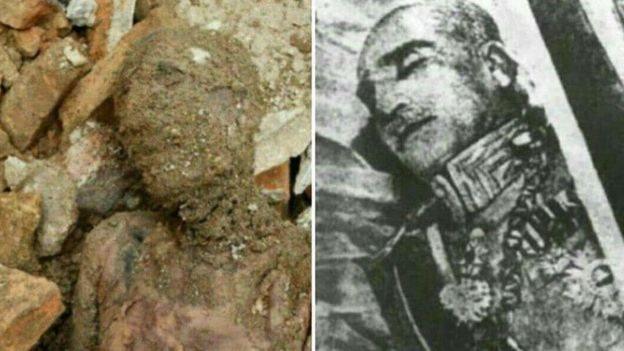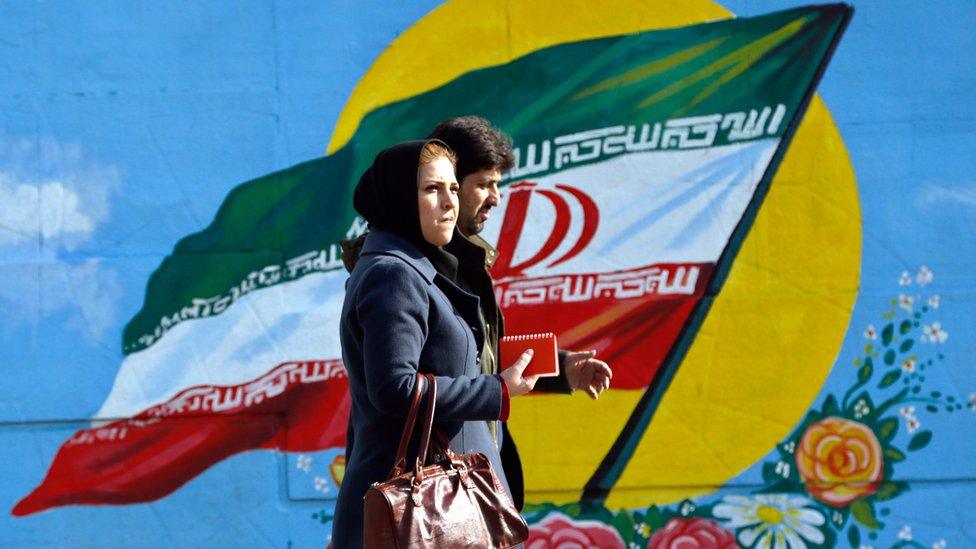Iran's Reza Shah: Mummified remains 'likely' belong to ex-leader
- Published

Mummy believed to be of Reza Shah (left) and Reza Shah's body (right)
A mummy discovered near the Iranian capital "most probably" belongs to the father of the last Shah of Iran, his family has said.
The mummified remains were found on Monday during construction at a shrine in Shahr-e Ray, south of Tehran.
Images and news reports shared online fuelled speculation that the body belonged to Reza Shah Pahlavi.
His tomb, also in Shahr-e Ray, was destroyed after the 1979 revolution but his remains were never found.
His grandson Reza Pahlavi, an opposition figure based in the US, said that the body "most probably" belonged to Reza Shah.
In a statement on Twitter, he urged the Iranian authorities to allow medical professionals trusted by the family to access the body, and to grant a proper burial inside Iran.
"If not as the father of modern Iran or as a King, but if only as a simple soldier and servant of his country and his people, Reza Shah must have a marked grave in a location known to all Iranians," he said.
Mr Pahlavi also denied reports that the Pahlavi family had moved Reza Shah's remains.
Allow X content?
This article contains content provided by X. We ask for your permission before anything is loaded, as they may be using cookies and other technologies. You may want to read X’s cookie policy, external and privacy policy, external before accepting. To view this content choose ‘accept and continue’.
The chairman of Tehran's Cultural Heritage Committee told the semi-official ISNA news agency on Monday that it was "possible" that the body belonged to the former leader, but some media outlets in Iran disputed this.
It is unclear where the body is now.
Who was Reza Shah?
A military leader who launched a coup in 1921, Reza Shah was the founder of the Pahlavi dynasty which ruled Iran for over fifty years from 1925.
Although he was credited by many for his modernising influence in Iran, Reza Shah was also criticised for his attacks on religion and alleged human rights abuses.
He died in exile in South Africa in 1944, three years after being forced to abdicate in favour of his son by British and Russian forces.
He was initially embalmed and buried in Egypt, but his body was moved to Iran a number of years later.
But the mausoleum where Reza Shah was buried was destroyed after the 1979 revolution which overthrew his son and successor, Mohammad Reza Shah.
- Published25 April 2018

- Published25 April 2018

- Published26 January 2018
